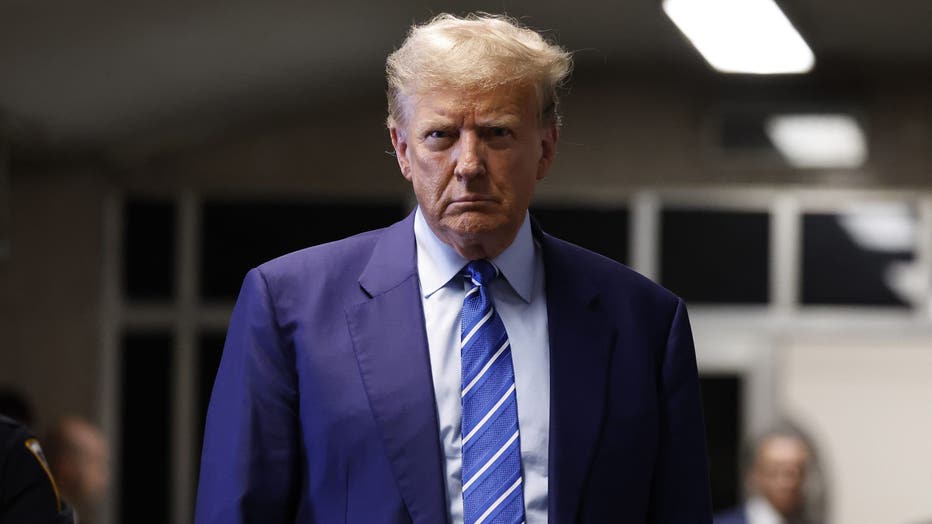Trump's potential recess appointments could land at Supreme Court

Trump announces more nominations
President-elect Donald Trump continues to assemble his core Cabinet ahead of taking office. Political Analyst Richard Gordon joins LiveNOW from FOX to talk about Trump's latest picks.
Despite Republicans winning control of Congress, President-elect Donald Trump has said he may use recess appointments to fill key Cabinet positions if the Senate doesn’t provide an easy confirmation process.
It’s a move that could result in a fight that lands at the Supreme Court, which could put Trump at odds with conservative justices. In its 234 years, the Supreme Court has decided only one case involving recess appointments. If the conservative justices had their way in 2014, they would have made it virtually impossible for any future president to make them.
RELATED: Can Kash Patel get confirmed by the Senate?
Supreme Court ruling on recess appointments
In 2014, the justices unanimously ruled that Democratic President Barack Obama's recess appointments to the National Labor Relations Board were illegal.
But they disagreed sharply over the reach of the decision. Five justices backed a limited ruling that held the Senate wasn't actually in recess when Obama acted and, in any event, a break had to be at least 10 days before the president could act on his own.

President-elect Donald Trump may use recess appointments to fill Cabinet positions if the Senate doesnt provide an easy confirmation process. (Photo by Michael M. Santiago/Getty Images)
Justice Antonin Scalia, writing for the other four justices, would have held that the only recess recognized by the Constitution occurs between the annual sessions of Congress, not breaks taken during a session. That would have ruled out the appointments Trump may be considering after the new Congress begins in January and he is sworn into office.
Just two justices, Elena Kagan and Sonia Sotomayor, remain from the five-justice bloc that took the view that preserved the president's power to make recess appointments during a session of Congress. Three others, John Roberts, Clarence Thomas and Samuel Alito, joined the Scalia opinion that would have made it virtually impossible for any future president to make recess appointments.
The rest of the court has become more conservative since then, a result of Trump's three high court appointments in his first term. Justices Neil Gorsuch, Brett Kavanaugh and Amy Coney Barrett have no record on this issue, which rarely arises in the courts. Nor does Justice Ketanji Brown Jackson, a 2022 appointee of Democratic President Joe Biden.
RELATED: Trump’s push for 'energy dominance' may face real-world limits
A more conservative Supreme Court might come out differently today, though it’s by no means certain. Once the court decides a case, the ruling is regarded as precedent that is not lightly discarded. So even some justices who initially dissent from a ruling will go along in later cases on a similar topic.
Scalia, an icon of the right, applied his originalist approach to the Constitution to conclude that there was little doubt what the framers were trying to do.
The whole point of the constitutional provision on recess appointments, adopted in 1787 in the era of horse and buggy, was that the Senate could not quickly be summoned to fill critical vacancies, he wrote.
Reading a summary of his opinion aloud in the courtroom on June 26, 2014, Scalia said the power to make recess appointments "is an anachronism."

The impact of trump's tariffs
Donald Trump loved to use tariffs on foreign goods during his first presidency. But their impact was barely noticeable in the overall economy, even if their aftershocks were clear in specific industries. The data show they never fully delivered on his promised factory jobs. Nor did they provoke the avalanche of inflation that critics feared. This time, though, his tariff threats might be different. Kerim Kfuri, Global Supply Chain Analyst & Supply Chain Expert, joined LiveNOW from FOX to discuss.
The Senate always can be convened on short notice to consider a president’s nominations, he said.
"The only remaining practical use for the recess appointment power is the ignoble one of enabling presidents to circumvent the Senate’s role in the appointment process, which is precisely what happened here," Scalia said.
Notable past recess appointments
Among the most prominent people who were first given recess appointments and later confirmed by the Senate are Chief Justice Earl Warren, Justice William Brennan and Federal Reserve Chairman Alan Greenspan.
Among those who left office after failing to win a Senate vote is John Bolton, who was given a recess appointment as U.N. ambassador under Republican President George W. Bush.
Trump could try to force a recess
A separate novel legal issue could arise if Trump were to invoke a constitutional provision that his allies suggested would allow him to force the Senate to adjourn, even if doesn't want to, and enable him to make recess appointments.
Article II, Section 3 of the Constitution includes a clause about congressional adjournments that has never been invoked. Trump's allies read it as giving the chief executive the power to step in when the House and Senate can’t agree on when to adjourn. The provision reads that "in case of disagreement between them, with respect to the time of adjournment, he may adjourn them to such time as he shall think proper."
But some scholars, including conservative ones, argue that the House has no power to force the Senate to adjourn, and vice versa. Congressional adjournments are spelled out in Article I, which requires one chamber to consent when the other wants to take a break of more than three days. Under this view, the president could intervene only when one house objects to the other's adjournment plan.

